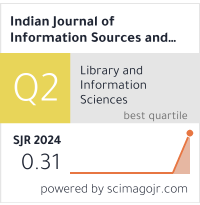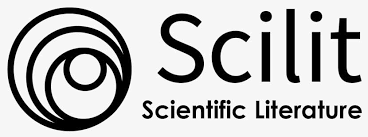Printed and Electronic Resource Preferences among Ophthalmologists: A Study in India
DOI:
https://doi.org/10.51983/ijiss.2018.8.3.554Keywords:
Print Resources, Electronic Resources, Ophthalmologists, Information Seeking, Information UseAbstract
The Ophthalmologists – Eye Doctors continuously seek and use information for their evidence-based practice, career advancements and quality patient care. The study aims to examine and explore the ophthalmologists’ preference towards print vs. electronic information resources. The study design is cross-sectional and convenience sampling method is adopted. A structured questionnaire was used to collect data. SPSS 18 PASW Statistical package was used for statistical analysis. Frequencies, percentages, Chi-square and Fishers’ exact test were used in the study. Around 633 ophthalmologists, working in 47 academic eye hospitals from 16 states of India were included in the study. The ophthalmologists prefer electronic resources more than the printed resources as a venue for access and publish. They consider both printed & electronic resources as more authenticated resources than electronic resources. They recognize electronic resources as easy to manage, use, economical, time savvy. They prefer electronic resources more than printed resources to improve their professional competency. The Ophthalmologists’ preference on resource choice doesn’t have any association with gender, age group, designation, experience, institution type. The study results revealed the ophthalmologists’ preferences on print and electronic resources. This will help the ophthalmic librarians to understand the resource choices of the ophthalmologists and manage information resources in libraries effectively. The study results will help the ophthalmic institutions and information providers for future planning
References
Liu, Z. (2006). Print vs. electronic resources: A study of user perceptions, preferences, and use. Information Processing & Management, 42(2), 583-592.
Mawindo, D., & Hoskins, R. (2008). Use of print and electronic resources by students at the University of Malawi College of Medicine. Mousaion, 26(1), 89-110.
Rimmer, J., Warwick, C., Blandford, A., Gow, J., & Buchanan, G. (2008). An examination of the physical and the digital qualities of humanities research. Information Processing & Management, 44(3), 1374-1392.
Niu, X., & Hemminger, B. M. (2012). A study of factors that affect the information-seeking behavior of academic scientists. Journal of the American Society for Information Science and Technology, 63(2), 336-353.
Zha, X., Zhang, J., & Yan, Y. (2014). Exploring the effect of individual differences on user perceptions of print and electronic resources. Library Hi Tech, 32(2), 346-367.
Mizrachi, D., Boustany, J., & Kurbanoglu, S. (2015, October). Academic reading format international study: investigating the “Print or Electronic” question around the world. In The Third European Conference on Information Literacy (ECIL): Abstracts, 58.
Mizrachi, D., Boustany, J., Kurbanoğlu, S., Doğan, G., Todorova, T., & Vilar, P. (2016, October). The Academic Reading Format International Study (ARFIS): Investigating Students around the World. In European Conference on Information Literacy. Springer, Cham, 215-227.
Tsai, C. C. (2016). A Case study of English-Major students’ Preferences for English reading from a Printed text versus electronic text. Stanisław Juszczyk, 142.
Wellings, S., & Casselden, B. (2017). An exploration into the information-seeking behaviors of engineers and scientists. Journal of Librarianship and Information Science. Retrieved from https://doi.org/10.1177%2F0961000617742466.
Woody, W. D., Daniel, D. B., & Baker, C. A. (2010). E-books or textbooks: Students prefer textbooks. Computers & Education, 55(3), 945-948.
Rockinson-Szapkiw, A. J., Courduff, J., Carter, K., & Bennett, D. (2013). Electronic versus traditional print textbooks: A comparison study on the influence of university students’ learning. Computers & Education, 63, 259-266.
Daniel, D. B., & Woody, W. D. (2013). E-textbooks at what cost? Performance and use of electronic v. print texts. Computers & Education, 62, 18-23.
Mizrachi, D. (2015). Undergraduates’ academic reading format preferences and behaviors. The Journal of Academic Librarianship, 41(3), 301-311.
Foasberg, N. M. (2014). Student reading practices in print and electronic media. College & Research Libraries, 75(5), 705-723.
Terra, A. L. (2015, October). Students’ reading behavior: digital vs. print preferences in Portuguese context. In European Conference on Information Literacy, Springer, Cham, 436-445.
Shepperd, J. A., Grace, J. L., & Koch, E. J. (2008). Evaluating the electronic textbook: Is it time to dispense with the paper text? Teaching of Psychology, 35(1), 2-5.
Downloads
Published
How to Cite
Issue
Section
License
Copyright (c) 2018 The Research Publication

This work is licensed under a Creative Commons Attribution-NonCommercial-NoDerivatives 4.0 International License.









